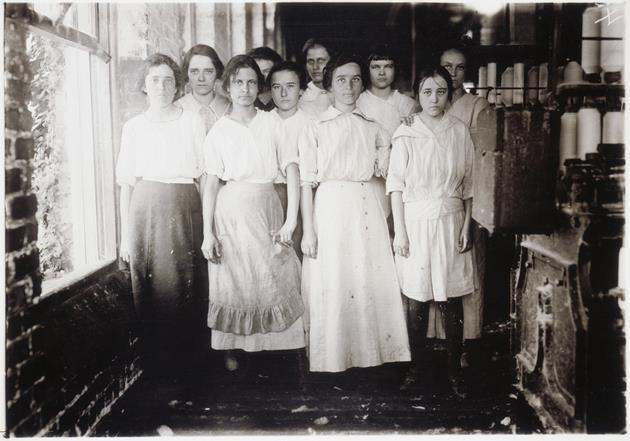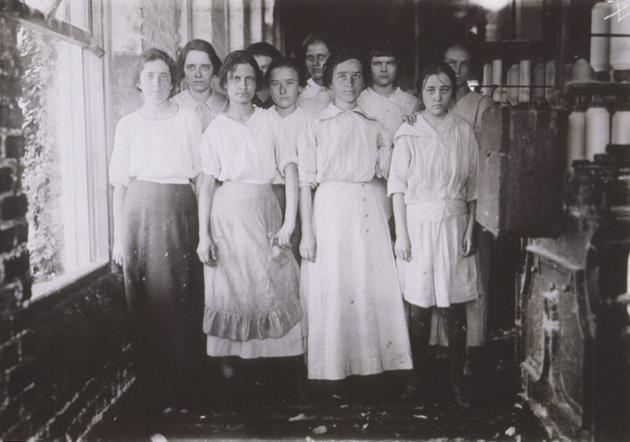Typical Workers in Barker Cotton Mills Where Good Conditions Prevail, Mobile, Alabama, #3828
1914
After teaching at the School of Ethical Culture in New York, Lewis Hine turned to photography as a means for promoting social reform. He set out to document gross violations of laws protecting young children in canneries, factories, agriculture, and mining operations, but the work became dangerous as irate foremen and factory police began to take notice. He invented guises to obtain entry: posing as a fire inspector, post card vendor, Bible salesman, and impoverished schoolteacher. In his photographs, children often look out of their surroundings with tough expressions; not succumbing to the idea of being helpless but already conscious of what Hine called "the vicious circle of poverty that awaits them." Here, the title indicates his approval of a cotton mill where "good conditions prevail." His photographs became the single most important influence in this country's passage of child labor legislation. Unfortunately, Lewis Hine died in 1940, a year before the Supreme Court declared the Federal Wage and Hour Law constitutional.
"I have to sit down often and give myself a spiritual antiseptic as the surgeon before and after an operation. Sometimes I still have grave doubts about it all. There is a need for this kind of detective work and it is a good cause, but it is not always easy to be sure that it is all necessary." --field note from Lewis Hine to Frank Manny, ca. 1910
Gelatin silver print
4 5/8 x 6 11/16 in. (11.8 x 17 cm)
Gift of Chuck Kuhn
87.82


